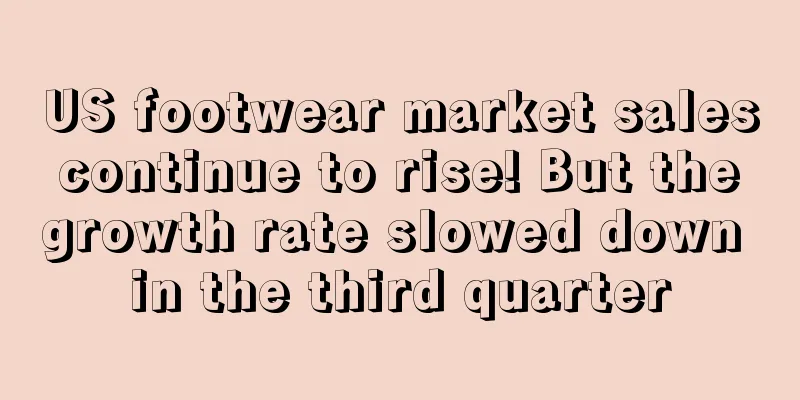Amazon will implement a new shipping process, sellers: It's a nightmare!

|
With the booming development of online shopping, competition among the major e-commerce platforms has continued to intensify. In order to enhance its competitiveness, Amazon will occasionally introduce new policies to improve its workflow, which are beneficial to sellers in most cases.
However, Amazon's recent updates to its delivery process have been criticized by a large number of sellers ...
Starting September 1, Amazon will start using a new shipping process
Recently, Amazon US announced that in order to make the shipment creation process more concise and convenient, Amazon will use the "Send to Amazon" workflow to replace the "Shipping/Replenishment" workflow on September 1, 2022.
It is reported that August 31 is the last day that sellers can use the delivery/replenishment workflow to create shipments. Starting from September 1, the old workflow will not be available. All new FBA logistics shipments must be created in the Send to Amazon workflow or using the Amazon Marketplace Web Service API and the Selling Partner API.
With the Send to Amazon workflow, sellers can streamline their shipment creation workflow. Send to Amazon can do the following: 1. Create a shipment using simplified steps (training videos included in the steps). 2. When sellers use the same configuration for a single SKU box, they can create reusable original packaging shipping templates to save the box information as well as preparation and labeling details. Using these templates, sellers can avoid re-entering these details every time they replenish inventory. 3. Add single SKU boxes and mixed SKU boxes to the same workflow. 4. Sellers can pack the boxes in advance or pack them when they are ready to ship.
Amazon’s announcement also shows that from now on, when sellers create shipments from “Manage Inventory”, “Manage FBA Inventory” or “Replenishment”, the system will automatically switch to the “Send to Amazon” workflow. Sellers can also access Send to Amazon from “Shipment Processing Progress”.
The launch of Amazon 's "Send to Amazon" seems to simplify the seller's workflow and save them a lot of time and energy. However, most sellers do not seem to be interested in this feature.
Below the announcement, sellers are everywhere expressing their opposition to the new process:
“ Ever heard the saying ‘if it ain’t broke, don’t fix it’? The people making these decisions are sitting behind a desk all day and have no idea of the problems sellers face with new workflows. ”
“ This is very very … terrible. We have tried using the new workflow 3 different times over the past year and it is bland, cumbersome, and completely useless compared to the old one ! ”
"Please don't do this, I agree with all the above who objected . Please keep the old workflow going until 302 7 years! "
Many sellers believe that the new workflow is a "nightmare" for their business. Some sellers even said that if Amazon forces sellers to use this new process, they will leave the Amazon platform.
"Existence is reasonable." According to feedback from sellers on the forum, the Send to Amazon shipping process can make the Amazon system more efficient and convenient when processing shipments, which is also a good thing for sellers.
However, when Amazon is developing new processes, it should indeed consider the sellers' user experience more. Some sellers said that they hope Amazon can hire real sellers to provide feedback and improve the current new processes.
As an industry leader, Amazon is not only constantly introducing new policies and updating and improving its own platform, but is also actively exploring ways to better grasp traffic from outside the platform.
Targeting off-site traffic, Amazon brand traffic rewards are coming!
Previously, Amazon US launched a program called Brand Referral Bonus, or BRB brand referral bonus program. The program gives brands the opportunity to receive rewards from non-Amazon marketing activities and improve their advertising efficiency.
Qualified sellers can attract traffic to Amazon through off-site marketing and complete orders. Amazon will return 10% of the sales generated to the seller on a monthly basis to offset sales commissions. If the buyer purchases other products of the brand within 14 days after clicking the ad, the seller can receive the same reward.
For example, for every $100 in sales that meets the requirements, the seller will receive an additional $10 in rewards on average. The more off-site traffic the seller brings, the more rewards they will receive.
For eligible sales, brands can receive an average reward of 10% of sales, but different product categories correspond to different minimum reward rates. The seller's actual reward rate may vary due to costs including shipping and gift wrapping fees. For example, the estimated reward rate for Amazon's device accessories category is 30%, while the estimated reward rate for apparel and accessories is 11%.
At the time, Amazon said there were three major benefits to participating in the program:
Stimulate sales and accelerate growth: Encourage the improvement of off-site traffic efficiency, introduce more traffic, and help business growth; Reduce costs and save expenses: Sellers receive a 10% reward on average sales, reducing off-site promotion costs; The more you sell, the more you earn, and efficient delivery: up to 14 days of promotion period.
According to Feedvisor data, 88% of 1,000 US brands use some form of advertising program on the Amazon platform, an increase of 21% from 2020. This shows that brands are seeing success in combining their marketing activities with Amazon Advertising.
In fact, with the rising cost of Amazon advertising in recent years, many sellers have begun to think about how to obtain traffic from activities outside the Amazon platform, and the brand traffic reward program is indeed an opportunity for sellers to boost sales and promote their brands. Sellers can consider testing the waters through social media platforms such as Facebook, Instagram, YouTube and TikTok.
Another reason that drives sellers on Amazon to keep trying new strategies is the increasing competition in the entire e-commerce market, not only between sellers, but also between platforms. The development of online businesses of platforms such as Shopify, Target, Walmart and eBay, as well as the launch of new integrations on Google and Facebook platforms, are prompting sellers to market more wisely to promote their brands and products through different channels.
Amazon's brand traffic incentive program is a win-win move . For Amazon brand sellers, the program can reduce certain costs, improve the efficiency of off-site marketing, and better promote brand growth . At the same time, the program can guide off-site traffic to the Amazon platform, which is conducive to further enhancing Amazon's popularity and consolidating its competitive advantage, which is also a great benefit to Amazon. Amazon announcement Platform Information |
<<: Amazon's new seller data is out! What challenges will Chinese sellers face?
>>: Tianze Information's M&A loan overdue case is sentenced, Youkeshu's equity may be sold
Recommend
Ozon opens sorting center in Belarus
Ozon opened a sorting center in Belarus and launc...
What is DSTLD? DSTLD Review, Features
Founded in 2013, DSTLD is a high-end denim brand ...
Amazon may be held responsible for counterfeit red-soled high heels on the platform
Amazon could be held liable for advertising count...
4,000 orders sold per day! These products are quickly gaining popularity
With an average of 4,000 orders per day , this pr...
American teenagers prefer second-hand goods
Recently, an organization conducted a survey of 7...
Annual revenue is nearly 4 billion! The huge sales caused the suspension of the European IPO
Under the influence of cross-border account block...
What is Chilibeli? Chilibeli Review, Features
Chilibeli is a community based application. About...
What is FunPinPin? FunPinPin Review, Features
The original intention of Qupinpin's establish...
What is the Financial Supervisory Service (FSS) of Korea? Financial Supervisory Service (FSS) of Korea Review, Features
<span data-docs-delta="[[20,{"gallery"...
Repeatedly on Amazon's BS list! Outdoor sales made $420 million in three months
On the Amazon platform, a brand that started out ...
Q1 sales soared 200%, Atterley platform received another £3 million in financing
Foreign media reported that Atterley, an online m...
What is GroupHigh? GroupHigh Review, Features
GroupHigh is a premium blogger outreach software t...
Despite the ban crisis, TikTok Shop's growth rate in the US still exceeds that of Temu and SHEIN!
TikTok has been in the spotlight since the U.S. S...
What is Nurx? Nurx Review, Features
Nurx was founded in December 2015 and is headquar...
GMV reaches US$600 million, Australian e-commerce Kogan achieves record growth
It has to be said that the 2020 epidemic has brou...









